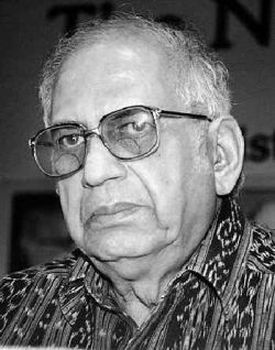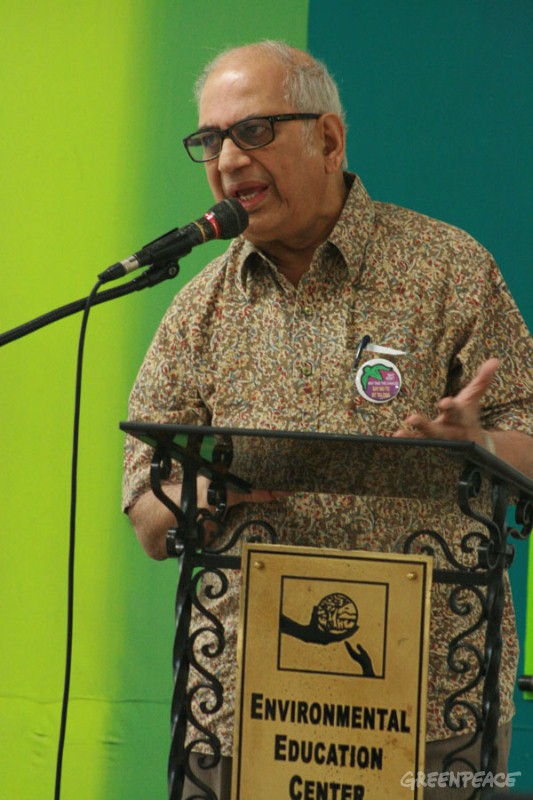Dr Pushpa Mittra Bhargava, whose vision, foresight and selfless efforts were instrumental to the establishment of Centre for Cellular and Molecular Biology (CCMB) in India, the contributions of which are now known around the world. Widely regarded as the architect of modern biology in India, he conceived the idea of establishing the CCMB and saw to it that it was built, equipped and staffed to uncompromising standards, and could match any other in the world its its quality and reputation.

Dr. Bhargava
He, along with a British scientist, are credited with using the term Genetic Engineering for the first time, back in the 1970s in the present context. And yet, he has been a consistent and outspoken critic of the technology as well as ethics of the biotech industry in its promotion of GMO. I had spoken with him once before and put up a podcast on the issues of GMO in India. But I had not discussed the specifics of the fault in the GMO technology.
And so, I had called up Dr. Bhargava, as a follow up. The discussion, edited and shortened, into an under 8 minute podcast, is linked below.

Podcast logo in iTune
You can either listen to it directly from this page by clicking the play button at the bottom of this page. For those that wish to store the audio and listen at leisure through their iPod, iPhone or iPad etc, can do so from Apple iTunes. Type “Tony Mitra” in the iTune Store search field, and the podcast should show up. One can subscribe to the podcast (its free) and listen to the episodes later. All the episodes are almost exclusively related to GMO. It is free of charge.

